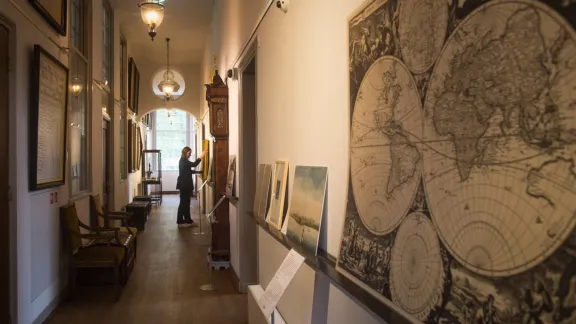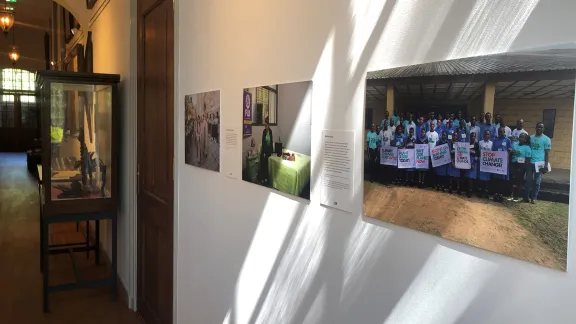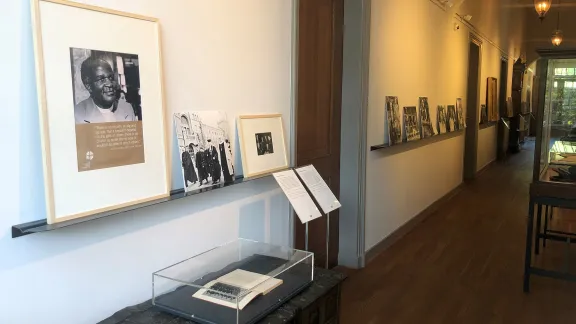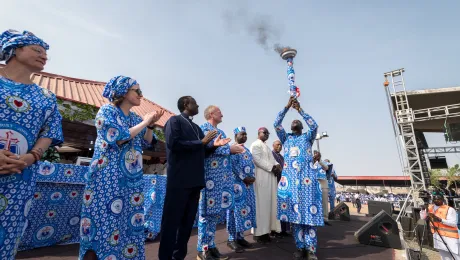The Dutch Luther Museum in Amsterdam has launched an exhibition on historical and current relations Dutch Lutherans had internationally. It also offers a critical reflection on the effects of these relations.

In Amsterdam, an exhibition titled “Luther & De Wereld” (Luther and the World) currently showcases local Lutheran history and the influence of Lutherans from the Netherlands worldwide. Photo: Luther Museum Amsterdam
Reflections on historical and current connections among Lutherans worldwide
In Amsterdam, an exhibition titled "Luther and the World" (Luther & De Wereld) currently offers insight into local Lutheran history and the influence of Dutch Lutherans worldwide. It features relationships in the global Lutheran communion today as much as broaching past historical and colonial developments. The exhibition will be displayed in the Luther Museum Amsterdam until 24 September.
Tonko Grever, the museum's artistic director, had the initial idea for the exhibition. "We were curious to investigate the role of the Dutch Lutheran church in the rest of the world throughout history," in light of the upcoming Thirteenth Assembly of The Lutheran World Federation (LWF) later this year, he said.
Since 1588 there has been a Lutheran church in Amsterdam, founded by German immigrants. Over the centuries, Lutherans migrated from the Netherlands to many other parts of the world and founded new churches on all continents. Due to this history, many Dutch Lutherans have always felt international connectedness.
Multi-faceted international relations

Current LWF projects supported by the Protestant Church in the Netherlands are featured in the exhibition. Photo: Luther Museum Amsterdam
The exhibition tells several stories of the multi-faceted relations of Dutch Lutherans worldwide.
There is a story about them struggling to have their own pastor in "Nieuw Amsterdam", the government seat of the Dutch colony of New Netherlands from 1626 to 1664. Today this is the city of New York. The Dutch Lutheran immigrants who settled in New Amsterdam struggled to build their own Lutheran church in the colony because the official religion at the time was reformed, and other religions were not allowed.
There is also the story from eighteenth-century Suriname, a Dutch colony: The Lutheran church owned a plantation and used enslaved people to work there, producing goods exported for the Amsterdam market. That inhuman practice was abolished in Suriname in 1863.
The exhibition also features the story of missionaries sent to the Indies in the nineteenth century.
The founding of the LWF is prominent as a key historical event of the twentieth century.

The founding of the LWF is a historical milestone in the Twentieth century. Photo: Luther Museum Amsterdam
Today, Lutherans in the Netherlands support LWF member churches worldwide in many ways. The exhibition features a project on combating domestic violence in Brazil and youth advocating for climate justice.
The accompanying program of the exhibition included a presentation by Ph.D. candidates Ramona Negrón and Jessica den Oudsten on their research into Amsterdam's largest slave traders. A lecture by Karel Weener, sharing critical views on the Lutheran mission in the Batu Islands, Indonesia, was delivered last month.
Tackling difficult subjects
Inge Weustink curated the "Luther & De Wereld" exhibition. Since its opening on 11 May, she has received diverse responses. "Generally, people are very interested in the complicated colonial history of the Lutheran church," she said. "So far, our visitors have welcomed the museum tackling difficult subjects such as slavery and mission as part of our Lutheran history."
What surprised visitors was that the LWF represents more than 77 million Lutherans worldwide, while the Lutheran church in the Netherlands is "only a small and declining community." It is therefore encouraging to see that the "Dutch church is part of a vast global Lutheran community."


